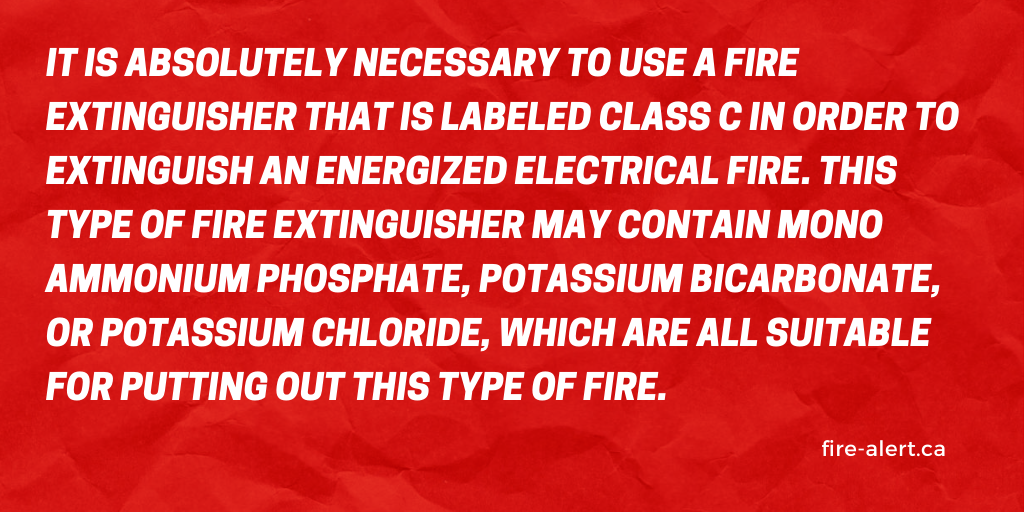What is a Class C Fire?
Last week we covered what a Class B fire extinguisher is used for, and the importance of using the correct safety equipment to put out this fire. A Class C or an “energized” electrical fire is no different. Choosing a fire extinguisher that is not meant to tackle this type of fire will cause an increased risk to yourself and those around you, making the use of a Class C fire extinguisher detrimental. In this article, we take a look at what a Class C fire is, how to distinguish a Class C fire, and how to prevent this dangerous occurrence in the first place.
What Are Class C Fires?
So, what are Class C fires exactly? This type of fire is classified as an “energized” electrical fire, meaning that the electrical component is plugged in when the fire occurs. This applies to electrical appliances and any device that includes wiring.
Koorsen Fire & Security tells us more about what a Class C fire is and how one may occur:
“Class C fires may be started from faulty wiring, a short circuit, damage to power cords, overloaded electrical outlets, overheated or overcharged devices, etc. As long as the equipment is connected to its power source, the power acts as a continuous source of ignition. Wherever there is charged electrical equipment and/or wiring, there is a risk of Class C fires.”
How to Extinguish a Class C Fire

It is absolutely necessary to use a fire extinguisher that is labeled Class C in order to extinguish an energized electrical fire. This type of fire extinguisher may contain mono ammonium phosphate, potassium bicarbonate, or potassium chloride, which are all suitable for putting out this type of fire.
Insider.com tells us more on how a Class C fire can be extinguished:
“If possible, you should try to extinguish the flames using a carbon dioxide or dry powder fire extinguisher. If and when the power source is disconnected, the fire can become a different class of fire, typically Class A. Do not try to put out an electrical fire with a water or foam extinguisher, as both of those materials can conduct electricity and potentially make the situation more dangerous.”
Preventing a Class C Fire
Preventing a Class C fire is the best method of fire safety, and there are several ways that this type of fire can be avoided. Gas appliances are a particular hazard when it comes to this type of fire, and should always be worked on by professionals. If you ever do smell gas within your home, you must immediately switch off all appliances and immediately call the emergency hotline of your local utility provider.
Fire Protection Online explains how to prevent a Class C fire when using gas canisters:
“So if you’re using gas canisters, for whatever purpose, you need to make sure that nothing is damaged in any way. To avoid a Class C fire in this situation, you need to be checking for signs of rust or dents. And don’t check for any leaks with a flame, but instead, use soapy water. You can also prevent ignition by ensuring that no flames, sparks, or burning embers are anywhere near the equipment. But avoid storing large amounts together to stop any accidents from being too disastrous.”
Fire-Alert takes pride in equipping homeowners, commercial businesses, and government buildings with all necessary fire safety devices to ensure the well-being of families and employees across the nation. Reach out to us using our contact form to find out more.